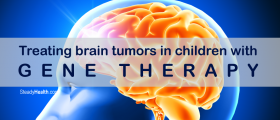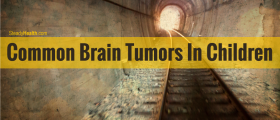
Definition
Neurofibromatosis (NF) is a genetic disease characterized by high susceptibility and formation of tumors growing around the nerves (originating from nerve tissue) and the brain tumors in children. These tumors are usually located subcutaneously. There is one more specific characteristic of the disease known as café-au-lait spots which are changes in skin's color.
There are two types of neurofibromatosis, type 1 and type 2. Type 1, additionally known as von Recklinghausen disease, is basically reported more than type 2 and accounts for approximately 90% of all cases. The condition develops as a result of absence of a specific tumor suppressor gene, the one which controls the p21 ras oncoprotein. If the mentioned protein is under control, there is no occurrence or further growth of tumors. However, if the protein is not suppressed, tumors easily develop and start to grow uncontrollably.
The condition can be only confirmed if there are at least two of the defined 7 criteria. The person must have two or more neurofibromas affecting the skin or subcutaneous skin tissue or develop at least one plexiform neurofibroma. Furthermore, there must be changes in skin pigmentation known as café-au-lait spots which typically occur in the groin or arm pit area. Six of these skin changes larger than 5 mm in diameter are sufficient enough when diagnosing the condition. The presence of skeletal abnormalities is also taken into consideration. Namely, there may be sphenoid dysplasia, thinning of long bones etc. Such patients are additionally prone to lisch nodules, tumors of the optic nerve, macrocephaly, seizures and juvenile posterior lenticular opacity. Finally, people suffering from neurofibromatosis type 1 easily develop meningiomas, gliomas and pheochromocytomas.
Neurofibromatosis and Cancer
The major problem these patients face is increased susceptibility to malignant tumors. In the majority of cases a sudden increase in size of already existing neurofibromas may be a sign of malignant alteration. It is essential to know that not all neurofibromas are malignant. But these benign tumors may easily turn into malignant ones.
Tumors affecting the optic nerve are particularly prone to this alteration. This is the reason why many patients eventually develop optic glioma. Optic gliomas are generally asymptomatic. Still, they may cause vision problems.
Patients suffering from neurofibromatosis type 1 are also susceptible to brain tumors including meningiomas, gliomas and may additionally develop juvenile myelomonocytic leukemia.
Additionally, these patients may suffer from hypertension, have short stature or skeletal abnormalities (e.g. scoliosis, macrocephaly etc.).
All in all, since the condition is associated with increased risk for certain cancer, such patients require regular check-ups and close monitoring. Only this way malignant disease can be diagnosed and dealt with on time.
Behavior and Cognitive Consequences of Neurofibromatosis Type 1
Apart from physical changes, children suffering from neurofibromatosis type 1 also exhibit some cognitive and/or behavior problems. Approximately 50% of all patients face behavior or cognitive problems which makes treatment even more complex.
Fortunately, certain number of children only deals with physical impairment. Severe problems related to mental sphere is generally evident in the first years of life. Most cognitive and behavioral issues are not progressive and none of them is specific for the very condition.
Firstly, the intelligence in these patients ranges from below average to normal and may sometimes be above average. Even children with normal intelligence may have problems with learning due to lack of a specific cognitive function. There is a variety of learning disabilities children suffering from neurofibromatosis can develop. They require special educational programs, designed and created to fulfill their needs.
Secondly, behavioral problems are basically in the form of attention deficit disorder or hyperactivity. Treatment is based on individualized attention and behavior modification. Medications are rarely engaged in treatment of behavioral issues.
Patients are mobile and there are usually no physical limitations. Most children suffering from neurofibromatosis type 1 are not fragile and may participate in many physical activities without any special protection. However, those with complications that may place them at risk for injury are advised to stay away from certain sports. The doctor will choose the most convenient sport or physical activity the child can safely engage in.
Finally, parents must be well educated and fully informed about the condition in order to help their child. They need to be honest with the child and answer all the questions regarding the illness, informing the child as well.
Relevant Data
Von Recklinghausen disease or type 1 neurofibromatosis is the most commonly reported type of the disease. It affects 1 out of 3,000-4,000 children.The condition is inherited in an autosomal dominant fashion and only from the parent who is suffering from neurofibromatosis as well. Each child has 50% chance to inherit the gene and both genders are equally affected. However, the severity of neurofibromatosis may vary a lot within one particular family. While some family members may suffer from mild form with only a few small neurofibromas, others may develop large tumors some of which are highly likely to progress into cancer.

















Your thoughts on this
Loading...